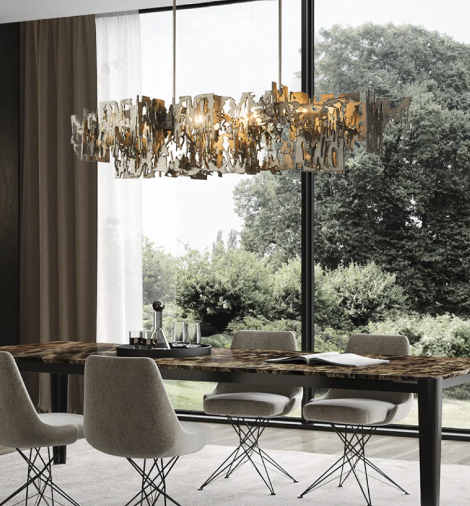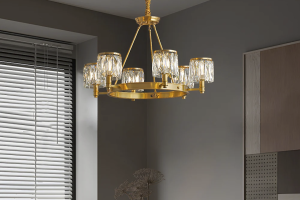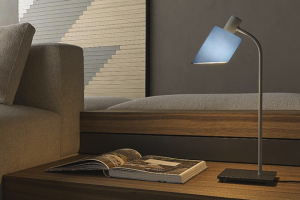Selecting the appropriate style for a chandelier is a crucial step in enhancing the aesthetic appeal of any space. The style of a chandelier should harmonize with the overall design theme of the room, whether it be traditional, modern, rustic, or eclectic. For instance, a grand crystal chandelier may be perfect for a classic dining room, exuding elegance and sophistication, while a sleek, minimalist design might be more suitable for a contemporary living area.
It is essential to consider the architectural features of the space as well; a chandelier that complements the existing elements, such as moldings, ceiling height, and furniture style, will create a cohesive look that feels intentional and well thought out. Moreover, the choice of style can also reflect personal taste and lifestyle. A vintage-inspired chandelier can evoke nostalgia and charm, making it an excellent choice for those who appreciate history and craftsmanship.
On the other hand, a bold, artistic piece can serve as a statement focal point, showcasing individuality and creativity. When selecting a chandelier Mosundesign, it is beneficial to explore various styles and designs, from ornate baroque to sleek industrial. This exploration not only helps in finding the perfect match for your space but also allows for an understanding of how different styles can influence the mood and atmosphere of a room.
Size and Proportion:
The size and proportion of a chandelier are paramount in ensuring that it fits seamlessly within the designated space. A chandelier that is too large can overwhelm a room, making it feel cramped and cluttered, while one that is too small may get lost in the surroundings, failing to make an impact. To determine the ideal size, one common guideline is to add the dimensions of the room (in feet) together and convert that sum into inches.
For example, a room measuring 10 feet by 12 feet would suggest a chandelier with a diameter of approximately 22 inches. However, this is merely a starting point; factors such as ceiling height and the scale of surrounding furniture should also be taken into account to achieve visual harmony. In addition to size, the proportion of the chandelier in relation to other elements in the room is equally important.
A high ceiling may allow for a larger chandelier or even multiple fixtures to create a dramatic effect, while lower ceilings necessitate more compact designs to avoid overwhelming the space. Furthermore, considering the height at which the chandelier will hang is crucial; it should be positioned so that it does not obstruct views or impede movement. A well-proportioned chandelier enhances the overall design by drawing the eye upward and creating an illusion of space, making it an integral part of the room’s architecture.
Placement and Location:
The placement of a chandelier can significantly influence both its functionality and aesthetic appeal. Traditionally, chandeliers are hung in central locations such as dining rooms or entryways where they can serve as focal points. However, modern design encourages creativity in placement; chandeliers can be used in unexpected areas like bedrooms or bathrooms to add an element of surprise and luxury.
When determining the location, it is essential to consider how the chandelier will interact with other light sources in the room. For instance, in a dining area, positioning the chandelier directly above the table creates an intimate atmosphere while providing adequate illumination for meals. Additionally, height plays a critical role in chandelier placement.
A general rule of thumb is to hang chandeliers approximately 30 to 36 inches above a dining table or kitchen island to ensure that they provide sufficient light without obstructing views. In spaces with higher ceilings, such as grand foyers or vaulted living rooms, chandeliers can be hung lower to create drama and draw attention. It is also important to consider how the chandelier will fit within the overall layout of the room; ensuring that it does not interfere with doorways or furniture arrangements will enhance both functionality and flow.
Lighting Considerations:
When selecting a chandelier, lighting considerations extend beyond mere aesthetics; they encompass functionality and ambiance as well. The type of bulbs used in a chandelier can dramatically affect the quality of light emitted. For instance, incandescent bulbs provide warm light that creates a cozy atmosphere, while LED bulbs offer energy efficiency and longevity with varying color temperatures.
Dimming capabilities are another important feature to consider; having the option to adjust brightness allows for versatility in setting the mood for different occasions, from lively gatherings to quiet evenings at home. Moreover, the design of the chandelier itself can influence how light is distributed throughout the room. Open designs allow light to disperse freely, illuminating larger areas effectively, while more enclosed styles may focus light downward or create interesting shadows on walls and ceilings.
The finish of the chandelier can also play a role in light reflection; polished metals tend to reflect more light than matte finishes. Therefore, when choosing a chandelier, it is essential to think about not only how it looks but also how it will function within the space and contribute to the overall lighting scheme.
Material and Finish:
The materials and finishes used in a chandelier can greatly impact its durability, maintenance requirements, and overall aesthetic appeal. Common materials include metal, glass, crystal, and even wood or fabric in more contemporary designs. Each material brings its own unique character; for example, crystal chandeliers are often associated with luxury and opulence due to their ability to refract light beautifully, while wrought iron fixtures can evoke a rustic charm or industrial vibe.
When selecting materials, it is important to consider not only personal style but also how well they will hold up over time in your specific environment. Finishes also play a significant role in defining the look of a chandelier. Polished chrome or brass can lend a modern touch, while antique finishes like bronze or gold can add warmth and character.
Additionally, matte finishes may provide a more understated elegance that complements minimalist designs. It is essential to choose materials and finishes that not only align with your design vision but also suit your lifestyle; for instance, if you have children or pets, opting for durable materials that are easy to clean may be more practical than delicate crystal designs.
Cleaning and Maintenance:
Maintaining a chandelier is essential for preserving its beauty and functionality over time. Regular cleaning helps prevent dust accumulation and ensures that light can shine through unobstructed. The cleaning process varies depending on the materials used; for instance, crystal chandeliers may require gentle cleaning with a soft cloth and specialized cleaner to avoid scratching or damaging delicate surfaces.
In contrast, metal fixtures may simply need occasional dusting with a microfiber cloth to keep them looking their best. It is advisable to consult manufacturer guidelines for specific care instructions tailored to your chandelier’s materials. In addition to regular cleaning, periodic maintenance checks are crucial for ensuring that all components are functioning correctly.
This includes inspecting wiring for any signs of wear or damage and replacing bulbs as needed. If your chandelier has intricate details or hard-to-reach areas, consider hiring professional cleaning services that specialize in lighting fixtures. By investing time in proper care and maintenance, you can extend the life of your chandelier while keeping it looking stunning for years to come.
Incorporating the Chandelier into the Overall Design:
Integrating a chandelier into your overall design scheme requires thoughtful consideration of how it interacts with other elements within the space. The chandelier should complement existing decor rather than compete with it; this means considering color palettes, furniture styles, and architectural features when selecting your fixture. For example, if your room features bold colors or intricate patterns, opting for a more understated chandelier can help maintain balance without overwhelming the senses.
Conversely, if your decor is minimalistic or neutral-toned, a striking chandelier can serve as an eye-catching focal point that adds character and interest. Furthermore, layering lighting throughout the space enhances both functionality and ambiance. A chandelier can be complemented by additional light sources such as wall sconces or table lamps to create depth and dimension within the room.
This layered approach allows for flexibility in lighting options depending on the time of day or occasion. When designing your space around a chandelier, consider how different lighting elements work together to create an inviting atmosphere that reflects your personal style while meeting practical needs.
Personalizing the Chandelier:
Personalizing your chandelier allows you to infuse your unique style into your home decor while making a statement about who you are as an individual. One way to achieve this is by selecting custom designs or bespoke options that reflect your tastes and preferences. Many manufacturers offer customizable features such as color choices, materials used, or even unique shapes that cater specifically to your vision.
This level of personalization ensures that your chandelier becomes not just another fixture but rather an integral part of your home’s identity. Additionally, accessorizing your chandelier can further enhance its uniqueness. Consider adding decorative elements such as crystals or shades that align with your personal aesthetic; these small touches can transform an ordinary fixture into something truly special.
Furthermore, seasonal decorations can be incorporated into chandeliers for festive occasions—think garlands during holidays or floral accents in spring—to keep your decor fresh and engaging throughout the year. By personalizing your chandelier in these ways, you create an inviting atmosphere that resonates with your individuality while enhancing the overall beauty of your space.






More Stories
Rustic Industrial Iron Wall Lamp: Perfect for Kitchen
Stylish Brass Chandelier Elevates Bathroom Decor
Enhance Your Dining Space with an Acrylic Table Lamp